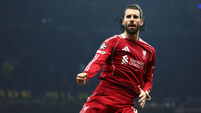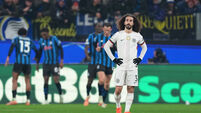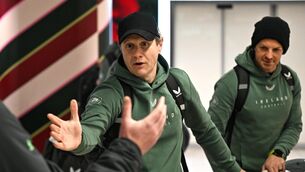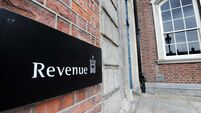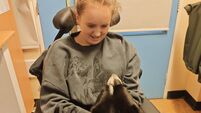THE BEST OF TIMES
I can’t help it: the screen is full of images of George in his prime, George in the green of Northern Ireland scoring against England; in the red of Manchester United crashing a spectacular half-volley to the net; and an even younger George, in various shades of fuzzy black and white, but still vividly illuminating all those dated TV pictures with outrageous body-swerves, darting runs and flashing headers.
And, as often as not, the final image is of the ball in the net, the keeper and maybe a couple of defenders flat out on the muddy turf, and George, walking away grinning, one arm aloft, the crowd in raptures, his fellow players - great names like Charlton and Law and Crerand - rushing to mob him with hugs and handshakes.








